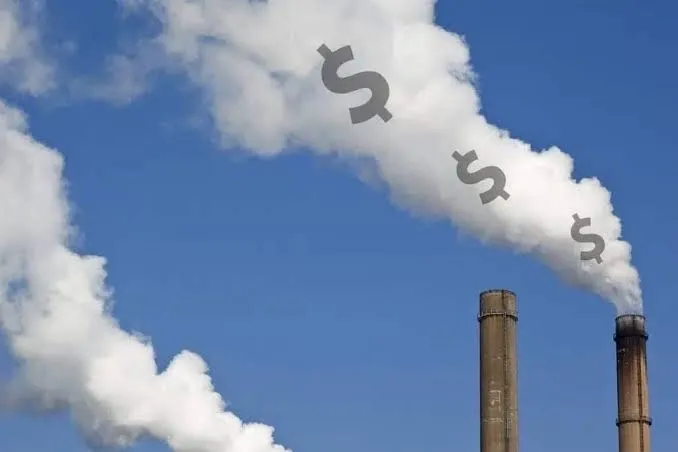Carbon taxes – a phrase that might conjure up images of bureaucratic jargon or a monster lurking in your electricity bill. The unsung eco-warrior of fiscal policies or just another line item on a stretched budget? In India, the idea of taxing carbon is a cocktail of necessity, ambition, and pragmatism, stirred with a generous dose of data. Let’s explore the scope, reasons, scalability, and future of carbon taxes in India with a quirky twist and some cold, hard numbers to spice things up.
The Scope of Carbon Taxes in India
India’s carbon tax game is a bit like a patchwork quilt – no uniformity, but it gets the job done. The star player here is the Coal Cess, introduced back in 2010 as a levy on both coal production and imports. It started at ₹50 per metric tonne and by 2016, it had jumped to ₹400. This isn’t just a tax; it’s a sneaky little nudge aimed at curbing the country’s coal addiction. By 2023, the cess had bagged over ₹2 lakh crore (over 25 billion USD). Originally, this windfall was funneled into the National Clean Energy Fund (NCEF) for renewable projects, but now? Well, most of it ends up in the GST compensation kitty. Then we have the fuel excise duties on petrol and diesel, which are basically carbon pricing in disguise. In some states, these duties make up more than 50% of the retail price, subtly tweaking consumption patterns. Together, these two measures create a quirky, yet effective, approach to carbon taxation – indirect, but definitely making an impact.
Why Carbon Taxes? The Case for a Green Levy
Now, onto the big question – Is it needed or not? Some critics say carbon taxes are regressive, mainly hurting the lower-income folks. But here’s the thing: with a little creativity, we can design these taxes to minimise that impact. How? By channeling the revenue into subsidies for clean energy and public transport. It’s like giving with one hand and taking with the other, but in a nice, green way. Let’s not forget that India’s climate commitments are pretty ambitious: aiming for net-zero emissions by 2070 and slashing carbon intensity by 45% by 2030, compared to 2005 levels. A carbon tax could be the secret sauce to achieving these goals. It sends a pretty clear economic signal: polluters pay up, while those embracing sustainability get a pass.
Imagine this – a modest $10 per tonne of CO2 tax could rake in billions every year, funding green projects and helping to soften the blows of climate change. And it’s not just theory – there are international success stories to back it up. Take Sweden, for example. The country introduced its carbon tax in 1991, and it’s now one of the highest in the world at €115 – €125 per tonne carbon tax, followed by Switzerland with a charge of €120; while the lowest carbon tax is charged in Estonia (€2.18) and Ukraine (€0.75), as of 2023. Then there’s Canada, which implemented carbon pricing across its provinces, helping to fund clean energy projects and public transit, all while keeping a lid on pollution. And don’t forget Germany, where carbon pricing has helped fund renewable energy expansion. Coming closer to home, China is rocking the carbon trading game. Net Effective Carbon Rates are €6.77 per tonne of CO2e on average in China. Meanwhile, India’s coal cess is sitting at a mere $5 per tonne, leaving room for growth.
The lesson? When done right, carbon taxes don’t just reduce emissions, they also help build a greener, more sustainable economy. So, is it needed? Heck yes! Could a little more carbon pricing push India towards its greener future? Absolutely.
Scaling Up: From Coal Cess to Comprehensive Carbon Tax
So, how do we turn this carbon tax thing into a game-changer? Well, first up, let’s broaden the coverage. It’s time to slap sector-specific carbon taxes on the big polluters – cement, steel, and transport – because they’re not exactly eco-friendly. And why stop there? Let’s add natural gas to the mix too. Next, we can integrate carbon markets. India kicked off its carbon market in 2023, and it’s got the potential to become a powerhouse, either complementing or even replacing direct taxes in some sectors. Of course, these pricing mechanisms need to be as transparent as a clean windshield and predictable enough to lure in some serious investment. Now, onto social safeguards. We’ve got to be nice to the people who might feel the heat. Reinvest that sweet carbon tax revenue into subsidies for renewable energy and public transport. And don’t forget the low-income groups – rebates or cash transfers to cushion the blow will go a long way. Finally, let’s get global. To avoid trade barriers and carbon leakage, India’s tax frameworks should cozy up to international carbon pricing systems. Who says we can’t play with the big players?
The Future: What Lies Ahead for Carbon Taxes?
The Union Budget 2023 dropped a pretty big hint – India might be gearing up to explore broader carbon pricing mechanisms. So, what could be on the horizon? Picture this: the Green Hydrogen Mission. Taxing emissions could help fund India’s ambitious billion dollar green hydrogen initiative, possibly turning India into a green energy powerhouse. Then there’s the transport sector shift – imagine a world where electric vehicles (EVs) are incentivised, and carbon taxes apply to aviation and shipping, revolutionising India’s mobility game. Finally, we’ve got the renewable energy boom, slapping higher taxes on fossil fuels could accelerate India’s goal of hitting 500 GW of non-fossil capacity by 2030. The future’s looking green!
While far from perfect, India’s carbon tax journey represents an essential step toward balancing economic growth and environmental sustainability. The coal cess and excise duties on fuel have laid the groundwork, but the road ahead requires more ambitious and inclusive measures. Expanding carbon taxation, paired with targeted social protections and innovative financing mechanisms, could transform India’s approach to climate action. As citizens, staying engaged, demanding transparency, and supporting progressive policies will be crucial in this transition. After all, when it comes to climate action, every rupee and every tonne of carbon counts.

